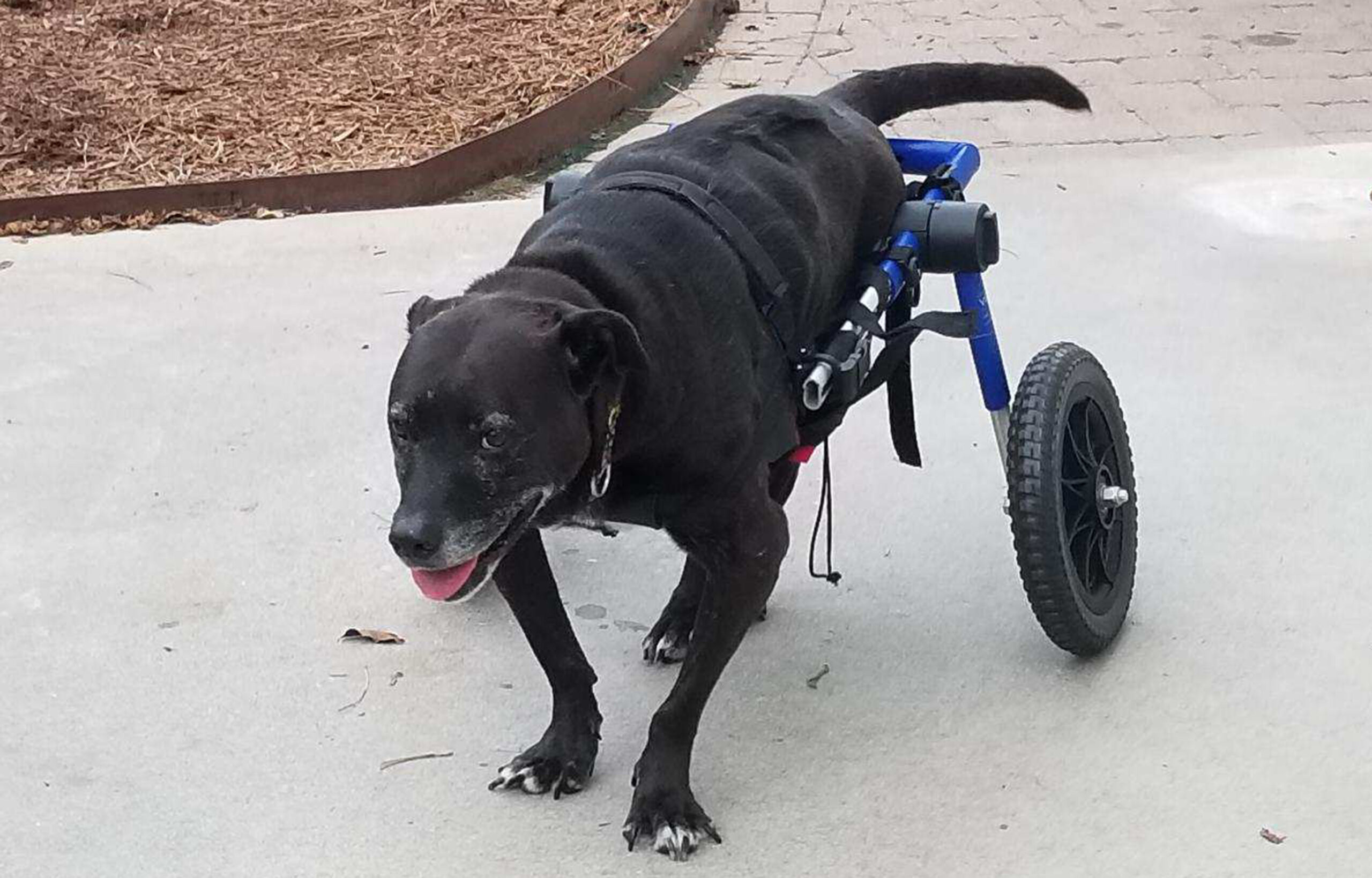The Wag Tells the Tale

At first, Cora Belle was wobbly.
David and Janet Knight first noticed their Labrador retriever mix unsteady on her hind legs a year and a half ago. By the following day, Cora Belle couldn’t stand or use her rear legs.
But she was still able to wag her tail.
That wagging tail was an important clue about what was to follow because it revealed a lot about two things: Cora Belle’s physical condition and her indomitable spirit.
When Cora Belle was about 6 months old, before the Knights rescued her, she had been discovered lying by a roadside, hit by a car. Emergency surgery saved her life, but her injuries caused lasting damage. Cora Belle was also born without a urethra, resulting in difficulty with basic bodily functions.
Through all her trials, however, the Knights report that Cora Belle has been lively and good-natured. “She has suffered so much, but she has always been happy,” Janet Knight said.
Even though she was unable to stand or walk, the fact that Cora Belle could move her tail meant that she wasn’t completely paralyzed. There was hope of restoring her to mobility.
After being referred to the NC State Veterinary Hospital by their primary veterinarian, the Knights, who live in Blounts Creek, N.C., soon brought Cora Belle to the emergency service. David Knight is a member of the North Carolina Veterinary Medical Foundation, and both Knights are well aware of the world-class care provided at the hospital.
After thorough examination the hospital’s diagnosis was spondylosis deformans, a painful condition that occurs when discs between the vertebrae degenerate, leading to the formation of bony spurs or bridges around the disc and nearby spinal joints. She also was suffering from osteoarthritis in several joints. Ongoing degeneration caused spinal cord compression, affecting her ability to stand or walk.

The surgery is a delicate procedure involving the separation of damaged material from the spinal cord. It was performed by Peter Early, clinical professor of neurology.
“In Cora’s case, there was acute exacerbation of an existing problem that had been going on for a long time,” Early says. “Over time, her spinal cord compression and inflammation was accompanied by a loss of spinal cord cells. “Her loss of mobility had just been waiting to happen. It doesn’t take much to be the last straw.”
Early compared the surgery to relieve her spinal cord compression and remove old disc material from her spinal cord to, “removing the membrane on the outside of a hardboiled egg.”
When she first went home, she was still unable to stand and was incontinent.
“For six months, she couldn’t walk. She didn’t even try,” David Knight said. “We were told the longer it took, the less likely it was that she would recover.”
The Knights had Cora Belle fitted with a wheelchair apparatus so she could regain her mobility, and she readily took to it.
“One night, we came home and she just stood up in the garage,” David Knight said. Janet Knight said Cora Belle would walk unsteadily, fall and rise to keep going. As time went by, she just got stronger and stronger. Now, she is nearly fully recovered.
“Her recovery was a longshot, but the surgeons were great. Everyone there was great,” said David Knight. “They have superheroes at NC State.”
A cause for paws… be a part of our #GivingPack on March 27! Your gift supports compassionate care for all animals and hands-on learning for vet students.
~Steve Volstad/NC State Veterinary Medicine
- Categories:


